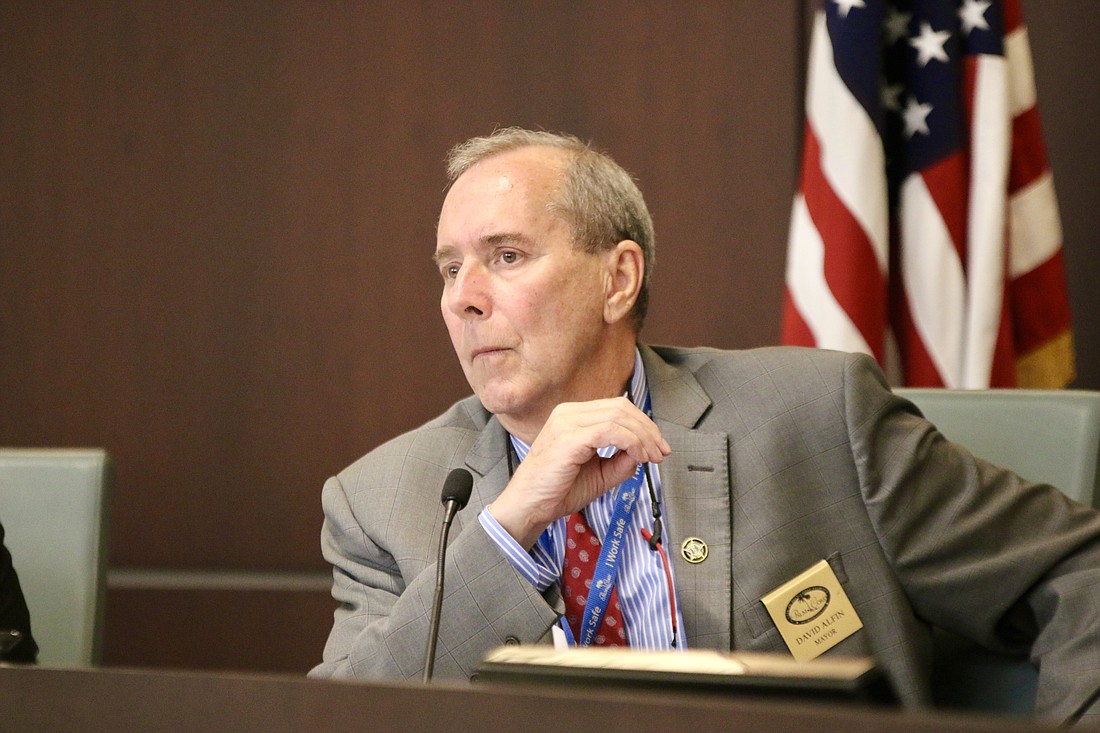- April 26, 2024
-
-
Loading

Loading

Palm Coast residents are likely going to see their storm rates increase to around $27 in October.
Stormwater and Engineering Director Carl Cote presented a breakdown of a potential residential stormwater rate increase during a City Council workshop on April 11. The increases, depending on which priorities are implemented, could see costs ranging from $27 to $45 over a four-year period.
The council members directed Cote to cut some initiatives from the rate study, but Mayor David Alfin said that in some cases it’s possible to mitigate the impact to residents.
“The problem here is there’s no way to deny increases,” Alfin said. “Generally speaking, we’re uncomfortable with the magnitude of the percent increases.”
The problem here is there's no way to deny increases. ... Generally speaking, we're uncomfortable with the magnitude of the percent increases. — David Alfin, Palm Coast Mayor
The presentation was a follow-up from a February workshop meeting where Cote told the City Council that costs had increased so much from inflation that capital projects had to be delayed. The new presentation divided the potential increases by five city stormwater priorities, calculating the increases needed to fund each.
Residents currently pay $22.27 a month for stormwater, and the rates have been steadily increasing since 2013. Cote said at the February meeting that the fiscal year 2022 rate increase of 8.2% just covered inflation.
The city will have to increase the rates some just to continue maintenance, which is covered under Priority 1, Cote said at the April meeting. To pay for Priority 1, residents’ stormwater rate would rise to $27.07 for the fiscal year 2024 and up to $33.78 by fiscal year 2027, an $11.51 increase over four years.
Priority 1 would fund program maintenance and capital projects, including $2.2 million per year in personnel costs, adding one freshwater crew and one additional ditch crew.
The Priority 1 tier also covers the cost of right-of-way swale mowing, but the city may end up making the owners of vacant lots foot the bill for mowing their land. The council members — minus Nick Klufas, who was absent — all agreed that taxpayers should not have to foot the right-of-way mowing bill.
Vice Mayor Ed Danko suggested giving property owners the right to opt out and take care of the lawns themselves or pay the city a fee to do it.
“I think most people would just be very happy to just have us deal with it and move forward,” Danko said.
Removing the right-of-way mowing costs would reduce the projected rates by $1-$1.25, Cote said.
Priority Tiers 2-4 would collectively add minimal cost increases — around $41 million across the three tiers over four years.
Priority 5 mostly deals with aesthetic considerations, Cote said. The council agreed to scrap that tier to cut costs.
Cote also said it may be possible to stretch out Priority 2’s timeline and delay some projects, but that heightens the risk of severe damage during large storms.
“If you don’t stay ahead of pipe failures,” Cote said, “it’s a lot more costly to go ahead and repair a pipe failure.”
All four council members were wary of such an extreme hike over a short period.
Danko said he’d only be comfortable approving Priority 1, out of necessity, while council member Cathy Heighter thought the council should explore more options to finance the costs.
Council member Theresa Carli Pontieri suggested approving a combination of the tiers to prevent costly pipe failures down the line while minimizing the impact to residents.
“The fact of the matter is, this is an investment,” Pontieri said. “God forbid government is being proactive rather than reactive.”
God forbid government is being proactive rather than reactive. — Theresa Carli Pontieri, Council member
Alfin suggested the council split the difference between the current fiscal year’s stormwater budget and the projected $8 million increase in 2024, by setting the increase at $4 million and cutting Priority 5 and the right-of-way mowing funding.
The council could try to pull the remaining $4 million from another part of the city’s budget to mitigate the impact to residents, Alfin said.
The City Council must approve the new rates by early July in order for the rates to go into effect on Oct. 1.